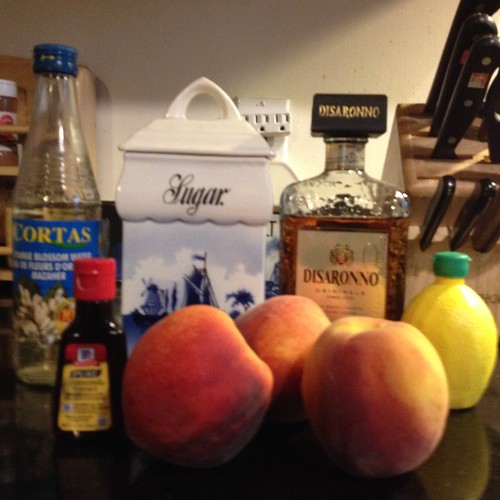Dear Constant Reader,
You might remember from Queen Drop Biscuits that I’m very fond of The Victorian Way video series from English Heritage. When I saw the video for Fashionable Apple Dumplings, I needed to try it.
Here the original recipe from Modern Cookery In All Its Branches by Eliza Acton (1860):
Fashionable apple dumplings
There are boiled in small knitted or closely-netted cloths (the former have, we think, the prettiest effect), which give quite an ornamental appearance to an otherwise homely dish). Take out the cores without dividing the apples, which should be large, and of a good boiling sort, and fill the cavity with orange or lemon marmalade, enclose them in a good crust rolled thin, draw the cloths round them, tie them closely and boil them for three quarters of an hour. Lemon dumplings may be boiled in the same way.
3/4 to 1 hour, if the apples be not of the best boiling kind.

The first thing I did was knit a couple of plain cotton dishcloths, which you can see on the photo along with some Cortland apples (my favorite), homemade blood orange marmalade, some flour and grated suet (I know, they look almost the same).
Following the video, I made a dough from flour, grated suet, salt, and water. From my years of making Christmas pudding, I knew that suet pastry can hold up to hours of steaming and was a good choice for boiling. I also knew that it was probably going to taste boring.
I peeled and cored the apples. The resulting hollow was filled with delicious marmalade and the whole apple encased in a thin layer of dough and sealed up very well.
I brushed the dishcloth with melted butter, although Mrs. Acton doesn’t say to do so, Mrs. Crocombe does and it seemed like a good idea. Then I put a dough-wrapped apple on a cloth and bundled it up. Then tied the cloth up tightly with a bit of cotton string. In to the boiling water it went for about 45 minutes.
And here’s the result!
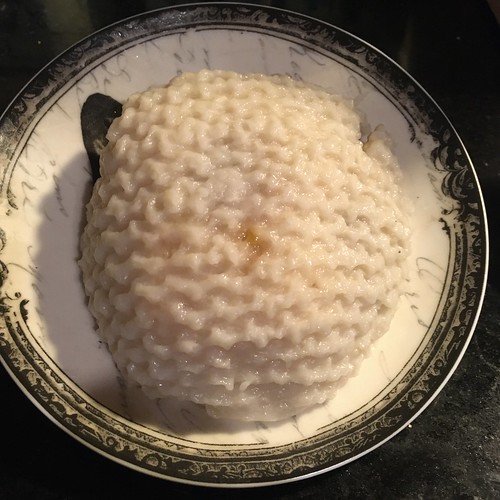
The dough took the imprint of the knitted cloth very well! The apple, however, had kind of collapsed within the dough and made for a rather squat dumpling. Maybe I boiled it too long or maybe I should have left the peel on. I feared the crust might be gummy, but it wasn’t, and it didn’t even taste half bad. The apple and orange marmalade combination was quite delightful and worth doing again. Boiling the dumplings in the knitted cloths was rather fussy and utterly Victorian, but one could probably get an easier and equally delicious result by simply wrapping the marmalade-filled apples in pie crust and baking. The dumplings won’t be fashionable, of course…
 These writings and other creative projects are supported by my Patrons. Thank you so much! To become a Patron, go to my Patreon page. Or you can just tip me if you liked this.
These writings and other creative projects are supported by my Patrons. Thank you so much! To become a Patron, go to my Patreon page. Or you can just tip me if you liked this.

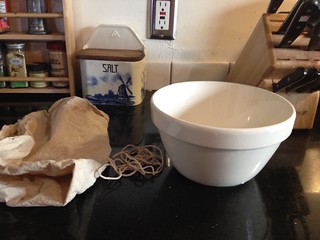
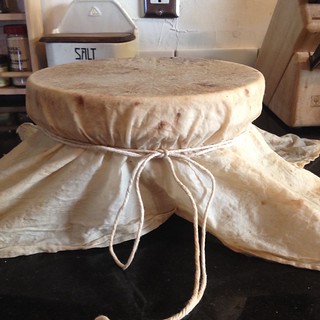
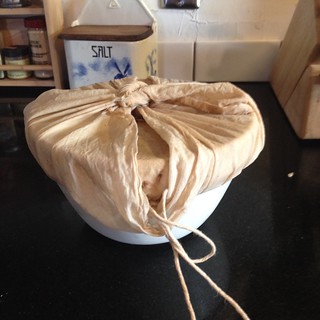
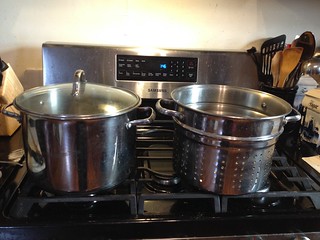

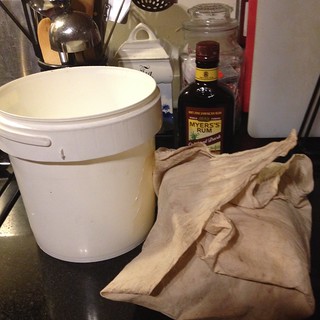 Now we age it. You’ll need your pudding cloth again, and your alcohol of choice, and a container in which to age the pudding. I use a food-grade plastic bucket with a lid that I got it from my local ice cream shop — I think it used to hold marshmallow topping.
Now we age it. You’ll need your pudding cloth again, and your alcohol of choice, and a container in which to age the pudding. I use a food-grade plastic bucket with a lid that I got it from my local ice cream shop — I think it used to hold marshmallow topping.